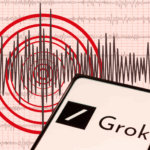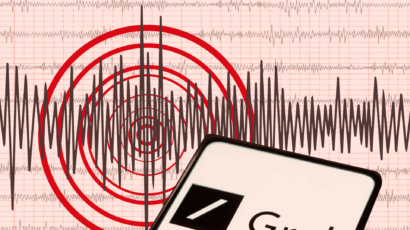Ukraine’s smart munitions deliver a punch—and a warning about the future of warfare
By Erik Lin-Greenberg | June 13, 2025
 President of Ukraine Volodymyr Zelensky listening to the report of the head of the Security Service of Ukraine Vasyl Malyuk on the success of the operation “Spider's Web.” Image: president.gov.ua, CC BY 4.0
President of Ukraine Volodymyr Zelensky listening to the report of the head of the Security Service of Ukraine Vasyl Malyuk on the success of the operation “Spider's Web.” Image: president.gov.ua, CC BY 4.0
Earlier this month, Ukraine’s security services launched an audacious, multi-pronged drone attack on military airbases deep in Russian territory. The attacks degraded Russia’s military capability, damaging or destroying dozens of bombers, transports, and command and control aircraft, and highlighted how drones are changing the character of armed conflict.
In the early days of the Russia-Ukraine war, Ukraine relied heavily on drones for intelligence gathering, employing remotely piloted aircraft to locate and help target enemy troops. Russia has launched thousands of one-way attack drones at Ukraine, destroying both civilian and military infrastructure. Both sides have increasingly used first-person view (FPV) drones—small and highly maneuverable platforms with relatively short flight times that transmit live video feed to operators—to attack their rivals. Most first-person view drones target troops and equipment near the frontlines, but Kyiv’s June 1st airbase attacks marked a significant shift in the employment of these drones.
Rather than using first-person view drones along the battlefront, the Ukrainian Security Service launched these drones to strike critical military assets thousands of miles from Ukraine in a mission dubbed “Operation Spider’s Web.” According to Ukrainian officials, the operation involved more than 100 small Osa quadcopter Ukrainian-made drones, each with four rotating propellers and carrying roughly seven pounds of explosives. Given their relatively short range—about 15 minutes of flying time—these drones were deployed near their targets, hidden in the roof compartments of prefabricated buildings loaded onto trucks. Once the trucks arrived at designated locations near the targeted airfields, the drones were launched and guided to their targets by pilots operating far from the front lines, reportedly aided by artificial intelligence systems.
Kyiv’s creative use of relatively low-tech and low-cost quadcopters demonstrates how drones can lower the barrier to obtaining long-range precision strike capabilities that were once the domain solely of advanced military powers. Proliferation of drone technologies and tactics will increase the number of actors—both state and non-state—that can project kinetic power in ways that hold their rivals’ critical military assets at risk.
While analysts and pundits debate the exact number of aircraft destroyed, Ukraine’s attack targeted Tu-22, Tu-95, and Tu-160 strategic bombers along with A-50 airborne early warning aircraft—all platforms that Moscow has employed in its war against Ukraine. Moreover, the coordinated attacks targeted five airbases, some of which were thousands of miles from Ukrainian territory.
What makes Kyiv’s operation notable is not only the destruction of Russian long-range aviation assets, but the innovative way in which Ukraine’s security service carried out the attack. Historically, long-range strike operations involve advanced munitions like stand-off missiles launched by assets that operate beyond the reach of an adversary’s defenses or stealth aircraft that can penetrate an adversary’s air space without detection. Operation Spider’s Web, however, shows that long-range precision strike need not involve high-end military assets. Instead, in line with what political scientist and former Deputy Assistant Secretary of Defense Michael Horowitz refers to as “precise mass,” large numbers of relatively simple first-person view drones launched close to target locations can cause damage akin to that caused by far more complex and expensive advanced munitions. And countries, non-state groups, and even individuals can now achieve that kind of precise attack.
Using relatively low-cost assets to attack more expensive ones that are critical to an adversary’s operations puts the cost-exchange ratio squarely in the attacker’s favor. Moreover, strategic assets like long-range bombers and command and control aircraft rely on specialized production lines and take time to build. When these platforms are no longer in production—as is the case with many Russian bombers—replacing destroyed assets and repairing damaged ones can be especially difficult and time consuming. This can prolong an attack’s effects on the targeted states military capability.
Beyond destroying military equipment, Ukraine’s precision strikes deep in Russian territory almost certainly generated psychological effects in Russia’s military leaders and public. The strikes demonstrate that areas of the homeland far from the frontlines are vulnerable, that the homeland is no longer an impregnable sanctuary.
Ukraine reportedly spent 18 months organizing Operation Spider’s Web, all while avoiding detection by Russian intelligence services. Ukraine’s attack also reportedly leveraged AI for targeting, using computer vision algorithms that allowed the drones to autonomously identify targeted aircraft. The communication links that enabled the operation are thought to have passed through commercial Russian mobile phone networks, allowing for drone control inputs and video to flow between the drones and their operators hundreds to thousands of miles away.
Although actors may attempt to mimic Kyiv’s attack, achieving the scope and scale of the Ukrainian operation will be difficult for many—especially for weaker states and non-state entities without significant organizational and technological capacity.
Even more limited operations, however, can still generate significant military effects. At bases around the world, expensive and strategically important assets are often stored in the open with little protection, especially at facilities—like airbases in the continental United States—that are far from active combat zones. Kyiv’s attacks should therefore serve as a cautionary tale about the vulnerability of critical military assets that adversaries can now hold at risk using relatively simple drones.
If they want to avoid attacks like Operation Spider’s Web, the United States and allied military planners should better secure strategically important assets. Some efforts may be passive in nature, like building hardened hangars to store aircraft. Other approaches involve active techniques; for instance, acquiring directed energy weapons or jammers to knock drones out of the sky. Strengthening defenses against drone attacks also requires a change in mindset: The homeland can no longer be viewed as beyond the reach of drone attacks.
Kyiv’s successful attack on Russian airbases is likely just the beginning of new era in which first-person view drones are creatively employed to conduct precision strikes deep behind enemy lines. For weaker actors, these drones unlock strike capabilities once far beyond their reach. For stronger state actors, first-person view drones provide a complement to more traditional precision-strike capabilities—offering more plausibly deniable or redundant operations in contested environments. First-person view drones are not a passing innovation—they are reshaping how states engage in statecraft and conflict, and their influence will continue to grow.
Together, we make the world safer.
The Bulletin elevates expert voices above the noise. But as an independent nonprofit organization, our operations depend on the support of readers like you. Help us continue to deliver quality journalism that holds leaders accountable. Your support of our work at any level is important. In return, we promise our coverage will be understandable, influential, vigilant, solution-oriented, and fair-minded. Together we can make a difference.
Keywords: AI, Quadcopters, Russia-Ukraine war, Ukraine, drones
Topics: Disruptive Technologies















